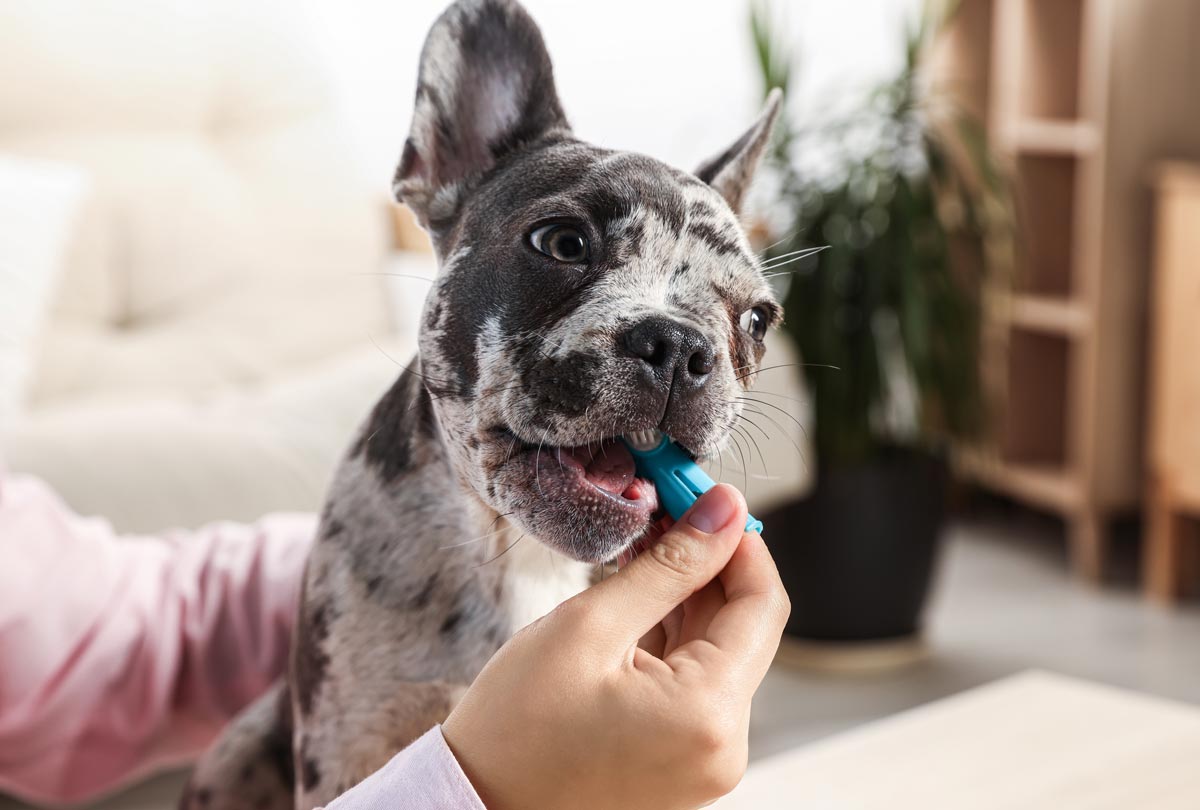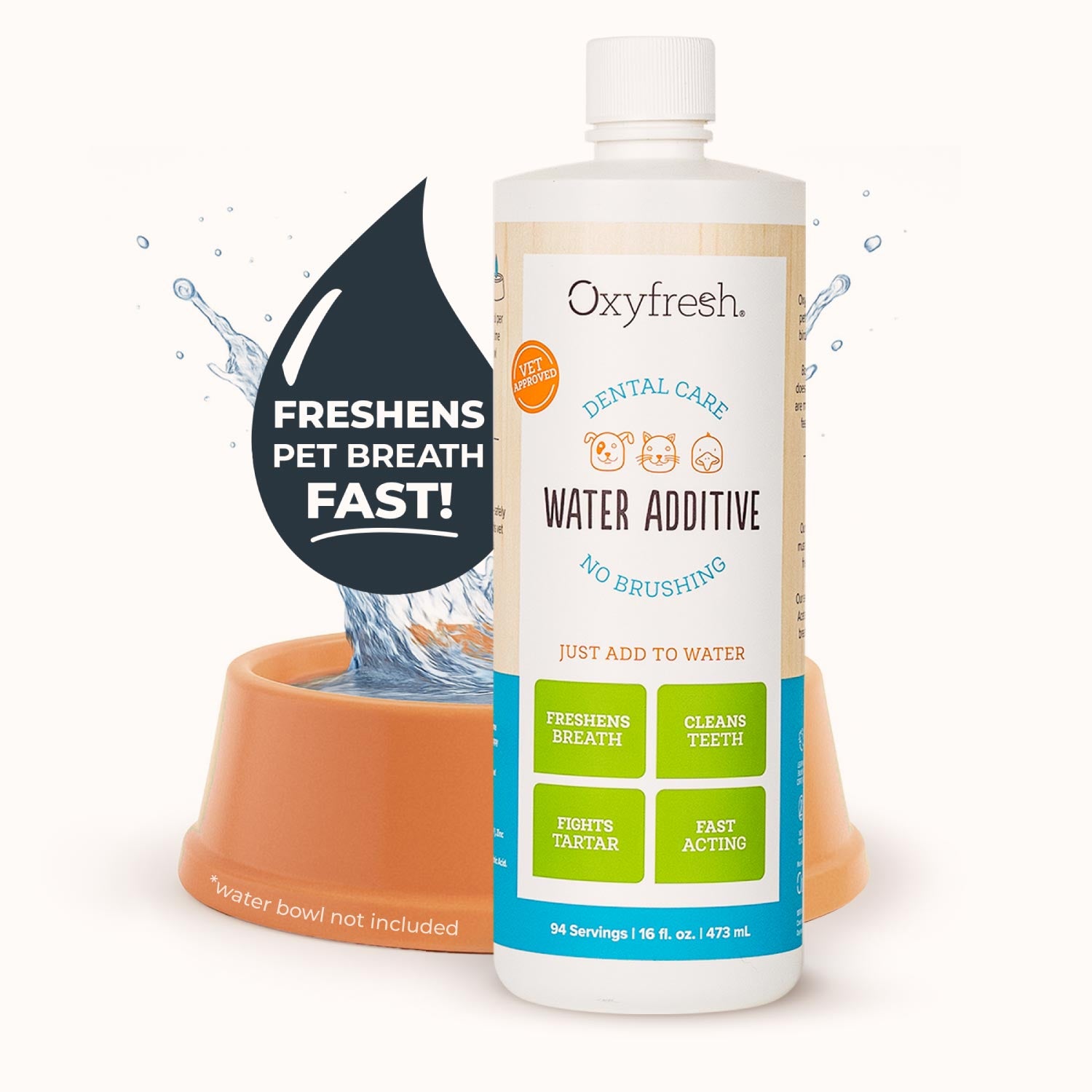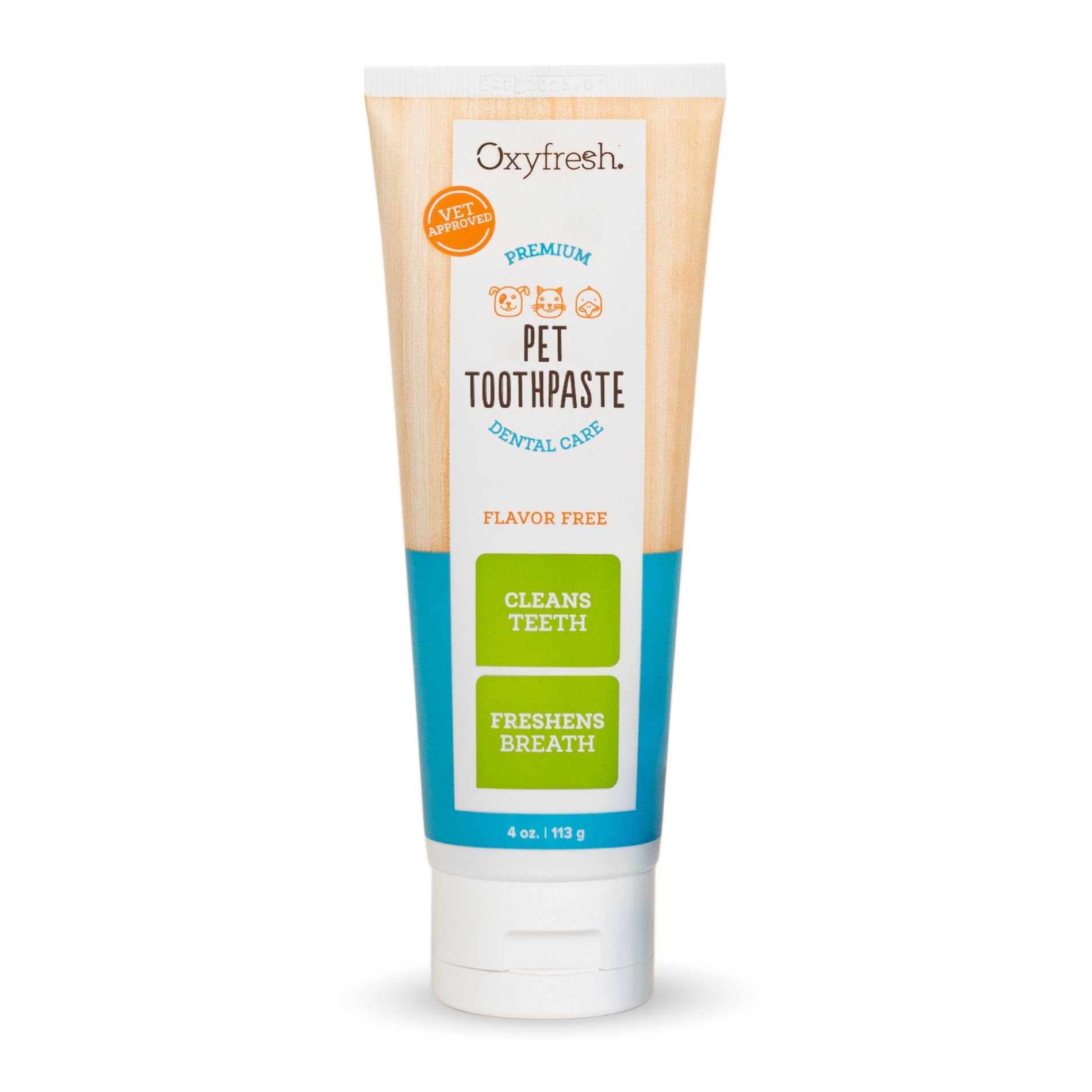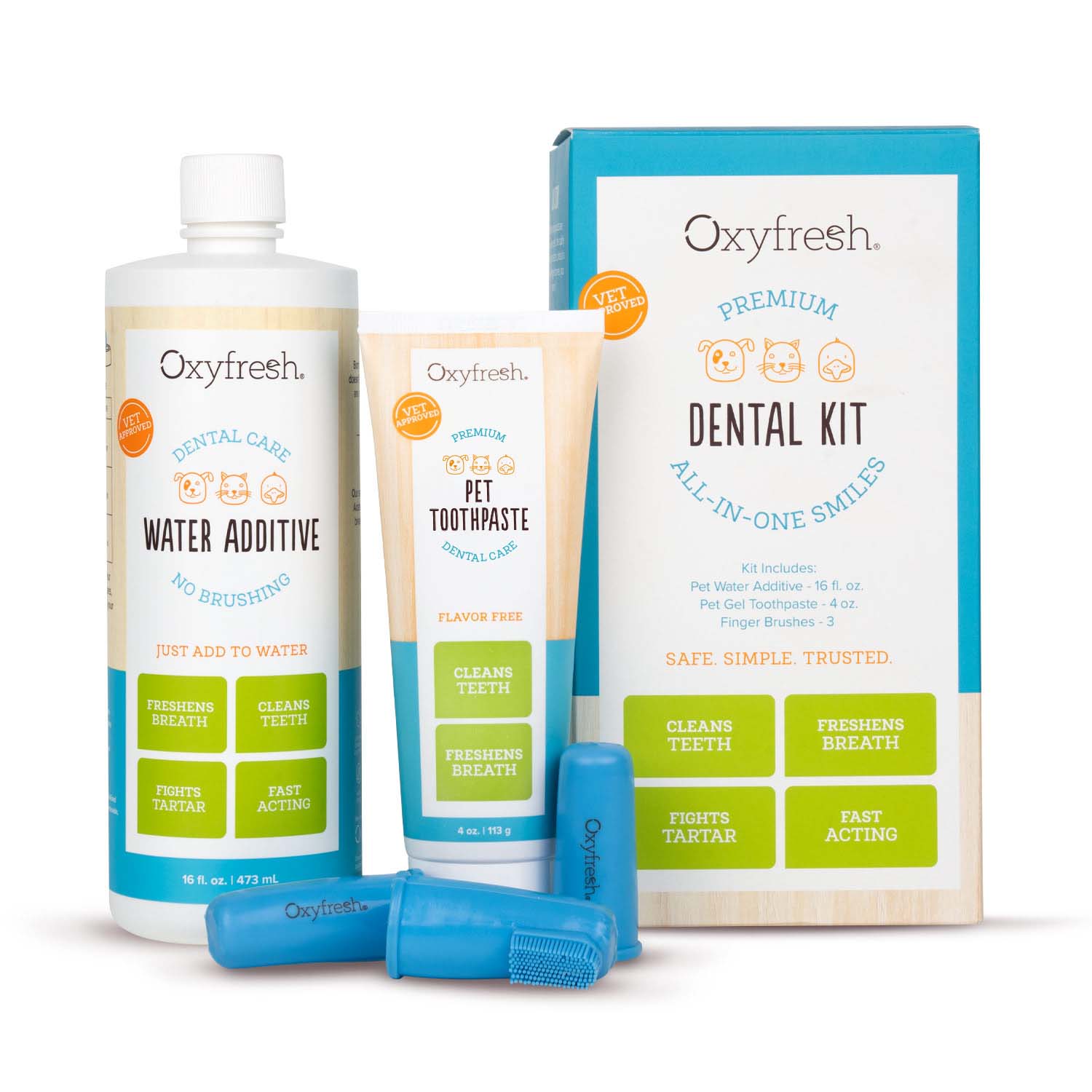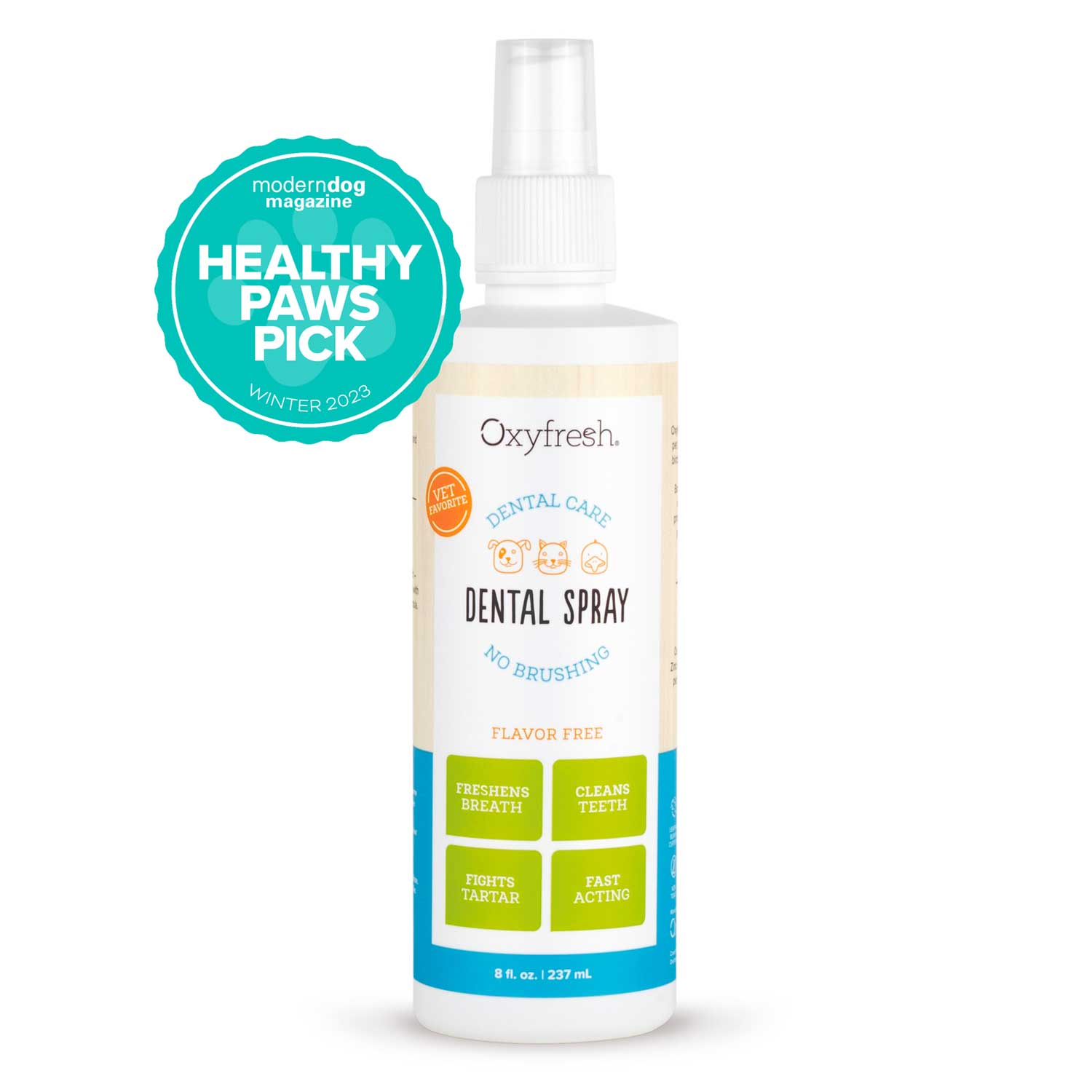A few decades ago (those ancient days of epic perms and – gasp! – rotary phones), no one was brushing their dog’s teeth. We all chalked bad dog breath up as "normal."
Today, we’re much wiser (and have much better hair). We understand that good canine oral health is essential to their OVERALL health. And it all starts with home dental care – especially using the right toothpaste. Which begs the question: should you use an enzymatic toothpaste for dogs?
What Is Enzymatic Toothpaste for Dogs?
Oh, this product? It has ENZYMES in it. (*humble brag*)
Yep, enzymes are one of those fancy terms that make us sound all cool. But what exactly ARE enzymes, and should they be in our dogs’ toothpaste?
Enzymes are proteins that act as biological catalysts. Now, if this is bringing back painful memories from science class, here’s the simple way to think of them: Enzymes speed up chemical reactions. In the body, when a cell needs to get something done quickly, it’s going to need an enzyme! Enzymes are specific for their particular jobs. For example, digestive enzymes break down food and help our cells absorb nutrients.
What about enzymes in dog toothpaste?
Enzymes in dog toothpaste reduce harmful bacteria in the dog’s mouth without impacting healthy bacteria. (Remember: all enzymes have a SPECIFIC job to do.) By targeting bad bacteria, they help keep plaque from forming and sticking to the pet’s teeth.
This is important because plaque is the starting point for canine gum disease, which affects as many as 9 in 10 dogs by age three. Left untreated, gum disease can eventually lead to tooth loss, pain, expensive dental procedures, and even a shortened lifespan.
Popular Enzymes Found in Dog Toothpastes
Don’t worry, there won’t be a spelling test afterward. What you need to know is all these enzymes do the job at fighting dog plaque and stopping harmful bacteria in their mouths. So if you’re shopping around for an enzymatic toothpaste for dogs, look for any of the following ingredients:
- Lactoperoxidase
- Lysozyme
- Lactoferrin
- Mutanase
- Dextranase
Good to know: Enzymes are naturally occurring and don’t contain nasty stuff like chemicals, steroids and antibiotics, things that can keep our pampered pooches from living their best lives.
But Wait, There's More to the Story!
We can’t stress this enough: just because a dog toothpaste contains an enzyme doesn’t mean it’s a quality product! Savvy shoppers need to look at the rest of the label when considering an enzymatic toothpaste for dogs. (Oh, and quick PSA: never share your own toothpaste with your dog. Ingredients in human toothpaste like fluoride can make dogs sick.)
Label Reading 101: Ingredients are listed in descending order of predominance (greatest amount to the least amount). For example, let’s take a box of cereal. If the first ingredient listed is sugar, that means there is more sugar in the cereal than any other ingredient. If you look at the ingredient list of many enzymatic dog toothpastes, you’ll likely see sorbitol listed first or pretty darn close.
What is sorbitol & why is it in so many enzymatic toothpastes for dogs?
Sorbitol is an artificial sweetener. Because it’s only altering taste, there’s no reason for it to be in dog toothpastes (especially as the #1 ingredient). Because dogs don’t know the trick of spitting out their toothpaste, sorbitol can cause dogs with finicky stomachs to have gas or diarrhea. (As pet parents, we can all agree: we’ve cleaned messes off the carpets enough!) Many dog treats have sorbitol, which only adds to the amount of sorbitol your dog is ingesting if you’re brushing their teeth once a day.
Avoid these ingredients in enzyme-based dog toothpastes too!
- Xylitol (toxic to pets)
- Chlorhexidine (bitter taste, not meant for long-term use, and can contribute to eventual tartar buildup)
- Harsh chemicals
- Alcohol
- Dyes
- Flavors
What to know about flavors in enzymatic dog toothpastes
Fake meat and mint flavors are often added to dog toothpastes to spark their curiosity and get them to try it. However, flavors are often artificial and linked to chemical ingredients. Artificial flavors and additives can cause stomach irritation for our dogs or trigger food allergies and sensitivities. We can only tolerate so many dog toots on a nightly basis, people! So if you’re a health-conscious dog parent, it’s best to look for flavor free.
What Are the Alternatives to Enzymatic Toothpastes for Dogs?
Enzymes are not the only option for targeting plaque in your pet’s mouth. Dog toothpastes with baking soda, although not enzymatic, are slightly abrasive where they will scrub away plaque and help neutralize odors. The downside is most dogs (at least the ones we've talked to) do not like the taste of baking soda. If you've ever gargled with a baking soda rinse, we're sure you can relate.
A taste-free alternative to enzyme-based dog toothpastes is to use an oxidizing dog toothpaste. An oxidizer can do the exact same job as enzymes, taking on harmful bacteria and bad-breath odors. Oxidation occurs when an oxidizing agent reacts with another substance, stealing their electrons.
Too sciency?
Let us explain how this works for dog oral health. Certain molecules cause plaque and bad breath. When those molecules meet an oxidizer, the oxidizer "steals their electrons," which renders them inactive. This prevents plaque and bad breath from forming. And there are no byproducts produced in this process. Keep in mind, just like with enzyme-based dog toothpastes, the quality of the rest of the formulation matters most.
What's the Go-To Oxidizing Dog Toothpaste?
Oxyfresh Pet Dental Gel Toothpaste has been the preferred brand of tail-waggers since 1984. This is the only dog toothpaste brand to contain Oxygene® - a proprietary, non-toxic oxidizer that neutralizes plaque and bad dog breath right at the source. Yep, we’re talking molecular-level breath control here, folks! No coverups with fake mint, chicken, liver or other odd toothpaste flavors. And definitely no sweeteners like sorbitol. How will you know this toothpaste works? By all those fresh dog kisses and good dental reports, of course!
Dogs (And Their People) Love Oxyfresh Toothpaste
- Instantly freshens dog breath
- Safe, non-toxic & USA made
- Picky-pet approved with no flavor or sweeteners
- Breaks down the bacteria that lead to plaque & tartar
- Recommend by veterinarians to help prevent gum disease
Important: No matter what kind of dog toothpaste you choose, whether it’s an oxidizer, contains baking soda, or has enzymes, make sure to be consistent in your dog’s dental care. To make a difference in your dog’s oral health, toothbrushing should ideally be done every day or AT LEAST three times a week. (Need a few pointers? Check out this quick read: How to Brush Your Dog’s Teeth ... Without Losing Your Sanity.) You got this!

